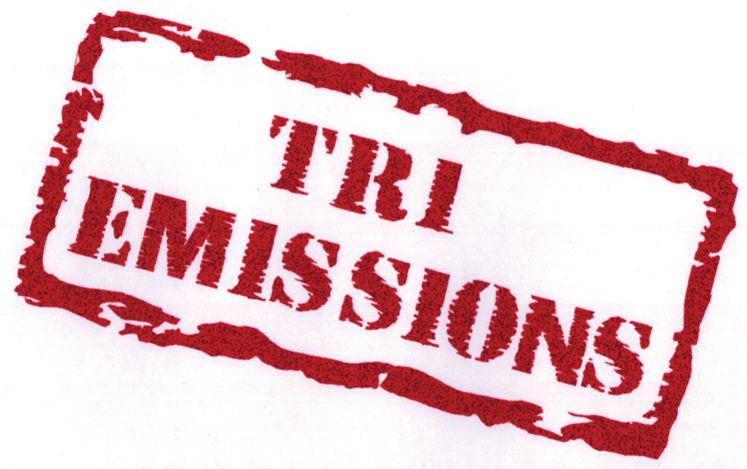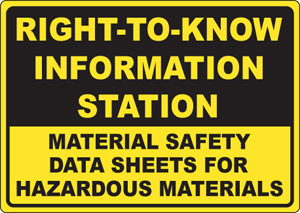Posts Tagged ‘TRI’
2011 Toxic Release Inventory Numbers Out from EPA, Still Plenty of Poison for Everyone
 After the devastating 1984 Bhopal Union Carbide chemical plant disaster in India that killed thousands, US policymakers decided it might be a good idea to keep track of where toxic and hazardous chemicals were stored and released. Thus was born the EPA's annual Toxic Release Inventory data base, wherein every company that keeps a certain amount of dangerous material on-site or releases it into the environment is required to submit an estimate to the agency.
After the devastating 1984 Bhopal Union Carbide chemical plant disaster in India that killed thousands, US policymakers decided it might be a good idea to keep track of where toxic and hazardous chemicals were stored and released. Thus was born the EPA's annual Toxic Release Inventory data base, wherein every company that keeps a certain amount of dangerous material on-site or releases it into the environment is required to submit an estimate to the agency.
Now the numbers for 2011 are out and available for your perusal via the EPA's own TRI Explorer tool, where with a little effort, you can find out what kind of threat you face in your state, county, city or zip code. We haven't had time yet to look at Texas or DFW facilities as a whole to see what's up or down but according to the this Bloomberg article from Monday, the national total is up from 2010, which is what you'd expect given the pace of economic recovery. In 2010, there were 3.8 billion pounds of chemicals listed, this year, 4. 1 billion pounds, or almost 13 pounds for every man, woman and child in these United Sates. Maybe some of you are feeling like you're getting more than your share. Now you can confirm or put to rest those suspicions.
This year's TRI included numbers for 16 previously unreported chemicals that have been classified as carcinogenic by the National Institute of Health's National Toxicology Program: 1-amino-2,4-dibromoanthraquinone; 2,2-bis(bromomethyl)-1,3-propanediol; furan; glycidol; isoprene; methyleugenol; 1,6-dinitropyrene; 1,8-dinitropyrene; 6-nitrochrysene; 4-nitropyrene; o-nitroanisole; nitromethane; phenolphthalein; tetrafluoroethylene, tetranitromethane; and vinyl fluoride.
EPA says total releases of reported carcinogens have doubled since 2008, while those of persistent, bio-accumulative, and toxic compounds have risen by about one-third. The agency will have its own national analysis in a month
Not included in any TRI yet are all the toxic and hazardous chemicals used in gas and oil drilling. Sixteen groups from around the country are petitioning EPA to officially include them in future inventories.
Groups Petition EPA to Include Frackers in Toxic Release Inventory
 A dozen environmental and citizens groups filed a petition with EPA on Wednesday to close a loophole in the law and include oil and gas pollution in the annual system of self-reporting emissions and releases with which most US industrial polluters already have to comply.
A dozen environmental and citizens groups filed a petition with EPA on Wednesday to close a loophole in the law and include oil and gas pollution in the annual system of self-reporting emissions and releases with which most US industrial polluters already have to comply.
The Toxic Release Inventory, or TRI, was created in the wake of the horrible Union Carbide plant accident in Bhopal, India, that killed 2500 people immediately, and caused another 16,000 deaths in the months and years since. It's supposed to keep track of all hazardous and toxic chemicals on-site or released by industry at every facility regulated – power plants, cement plants, refineries, chemical plants of all kinds, lead smelters, etc. TRI numbers are self-reported once a year by the companies operating the facilities, based on EPA formulas. These numbers are then made available to the public via the EPA's own TRI Explorer site, or independent groups like RTK.net run by the OMB Watch folks.
However, the TRI leaves out a very large industrial segment – oil and gas drilling. This exemption might have made some sense 30 years ago, but it doesn't now, especially given the dramatic rise in modern-day fracking techniques that use large volumes of hazardous and toxic materials.
If EPA regulators went along, that would fold in not just drilling but also related activities at the wellhead, before oil and gas is ready for transport to customers and refiners. Under environmentalists’ petition, companies would be forced to report chemicals released in drilling and completing wells as well as compression operations and processing at fractionators that split gas into separate components.
Disclosures also would be required from hydraulic fracturing operations, in which mixtures of water, sand and chemicals are pumped underground to release natural gas and oil from dense rock formations.
Eric Schaeffer, director of the Environmental Integrity Project that spearheaded the campaign, stressed that the foundation of the TRI was a deeply held belief that the public has a right to know what kind of pollutants are being released from neighboring facilities.
We’re asking the EPA to “honor those values,” Schaeffer said. “EPA has the power to add other sectors that ought to be reporting, and we’re asking them today to exercise the authority.”
Jane Davenport, a senior attorney with the Delaware Riverkeeper Network, said the reporting mandate should apply broadly.
“The oil and gas industry should not get a pass from statutes that apply to other industries,” she said, noting that the industry already enjoys some exemptions from provisions in the Clean Water Act and other environmental laws.
This may not sound like a radical step, but don't discount the power of public disclosure. TRI numbers from the Midlothian cement plant helped Downwiders show that the kilns were the largest industrial and toxic polluters in North Texas, proved the companies were not telling the truth when they said there were no toxic emissions from waste-burning or cement-making, and allowed citizens to track the volumes of pollution coming out of the kilns and analyze those numbers for trends. That's why the oil and gas industry will be fighting tooth and nail to keep the loophole open. Even something as innocuous as disclosing your own chemical information is threatening to operations that have enjoyed historic protections from the public spotlight.
